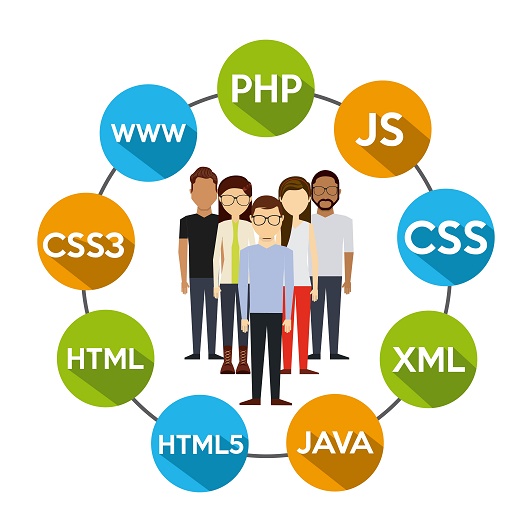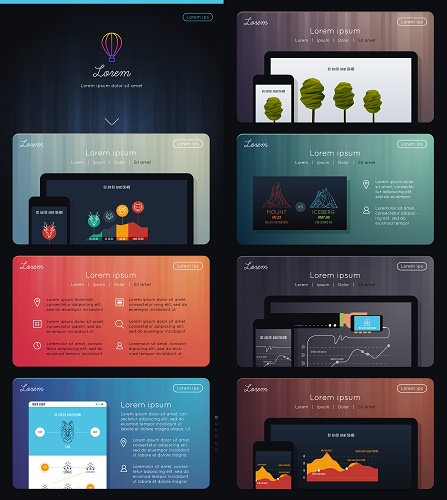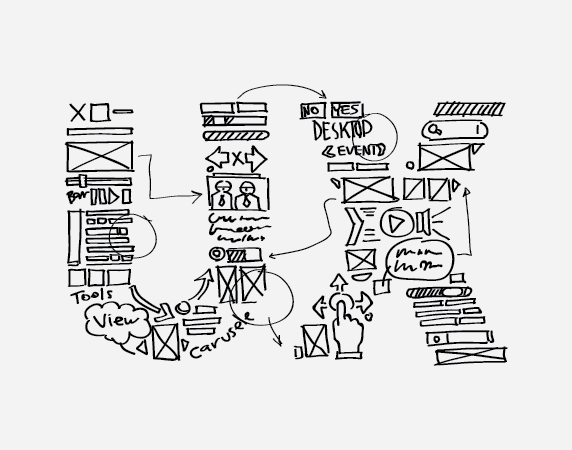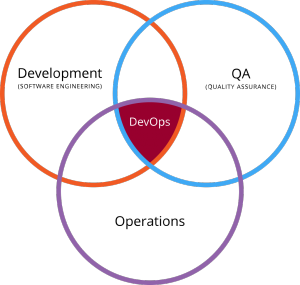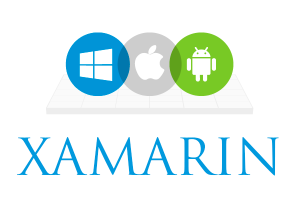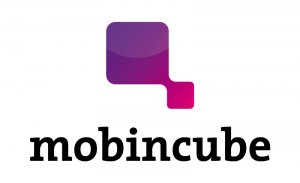Category: Mobility
There are over two billion smartphone users in the world, and an average US adult spends about 3 hours and 15 minutes a day on mobile apps alone. The spread of the BYOD culture has led to smartphones permeate the enterprise in a big way as well.
The huge surge in adoption and popularity of enterprise mobility is not just owing to the unmatched convenience it offers, but also owing to its potential to unleash innovation that transforms enterprises and enable it to remain competitive in a highly challenging environment.
Unlocking New Possibilities
The direct impact of mobility is the ability to transform a static enterprise, limited by geography, to a dynamic enterprise transcending geographical limitations. A bigger benefit is, however, the ability to leverage mobility to realize opportunities and satisfy customers. IBM Institute for Business Value reports 84% of CIOs rating mobile solutions as a critical investment to get closer to customers.
Smart enterprises have unleashed several innovations that ushered in new business models, with enterprise mobility apps at its core. Businesses have leveraged mobility to offer new products and business models, ranging from Uber taxi solutions to distance learning courses, and from smart apps that allow customers to order their menu before setting out to the restaurant, to apps that allow passengers to choose their seats, meals, and special preferences at flights, and much more. Such innovation has permeated almost all sectors, freeing up staff, saving the customer’s time, improving accuracy, and offering a greater deal of choice and flexibility.
- Financial services leverage mobility to deliver new workflows, aimed at improving customer services, while strengthening their compliance practices at the same time. Mobility becomes an effective means to innovative and cope with the increasing pressure to meet continuously changing regulatory requirements and competitive threats while providing enhanced customer service experiences at the same time.
- Healthcare companies leverage mobility solutions to push healthcare information to patients and offer innovative options. Smart apps, for instance, allow patients to self-diagnosis and transmit key parameters to the physician.
- Retailers embrace mobile technologies to expand their customer base, offer better and innovative options for their customers. E-commerce itself was a path breaking innovation that has been extended to mobility in a big way. This apart, smart-devices offer a platform allowing customers to pay and purchase in many innovative ways.
- Manufacturers leverage mobility to forge an effective collaboration among employees, contractors, third parties, and even customers, at a global scale. Many manufacturers have successfully innovated with mobile apps to deliver end user requirements of reliable and fast access to critical design applications.
Centralization of the core end-user activities in the cloud at the backend enables unbridled access to mission critical applications on any device, and anywhere, and is a key enabler of delivering innovative business processes.
Another key area where enterprise mobility apps have a big impact is marketing. Today’s customers demand multi-channel engagement, with mobile devices a key element in the mix. Delivering innovative apps to serve the needs to the customer in the simplest way, and also stand out from the competition is the key to retaining customers.
Transforming the Enterprise
Mobile apps have transformed the workings of an enterprise in a big way, unlocking new possibilities, improving productivity manifold, accelerating the velocity of work, and more. The innovations in this space have been continuously on the rise.
The first wave of mobility resulted in apps connecting executives on the move, to facilitate real-time and instant decision making. Several apps also made work seamless. For instance, apps allowed employees to upload a presentation and use it at the client site. As mobile technology advanced, more complex innovations have started to emerge, such as enabling field service executives to connect to experts in the command and control center, to spare the need for revisits or even deploy highly paid technocrats to site visits. Apps powered by Augmented Reality enhance the insights available to a customer-facing employee.
Mobility facilitates a radical redesign of work. Consider the case of a debt collection team, or a machinery service team. The old way of assembling at the office every morning and making a list of site visits is highly inefficient as well as inflexible. Mobile apps automatically assign the next port of call for a debt collector or technician based on distance, expertise, and other factors, improving efficiency manifold, speeding up work, and delivering results in better job satisfaction as well. Mobile apps also keep the team updated on latest knowledge and information. In-built Location tracking capabilities allow team leaders to remain in control of the situation, without having to intrude.
For top management, mobility apps enable the enterprise and its key stakeholders to get access to contextual data in real-time. When routed through powerful analytical engines of today, the raw data is crunched into actionable insights, extremely useful to make high-quality business decisions based on real and emerging trends, and also seize the moment with a customer, improving customer satisfaction manifold.
A Survey by Constellation Research reveals more than 80% of the enterprises are aware of the impact of mobile transformation on internal and external stakeholders and have established dedicated teams to work on solutions
While the potential for mobile apps to transform the workplace and business is unlimited, such benefits do not realize without a nicely designed app that serves its intended purpose. We are experts at building highly intuitive power packed apps, with a veneer of simplicity, as our hundreds of customers, cutting across industries will vouch. With us as your partner, your mission to unleash innovative transformation becomes that much easier. Contact us now.
Stay up to date on what's new

Featured Blogs
Stay up to date on
what's new



Talk To Our Experts
The mantra of success in today’s hyper-competitive and tech-neutral age is offering unmatched value, topped up by incredible experience, to customers. With the focus on the end product, most enterprises overlook the fact that the software development team are often the front lines in delivering superior service. The software developing a glitch when an urgent work is pending, searching in vain for an essential feature overlooked by the development team, a convoluted process to achieve a simple thing are an all-too-common experience which frustrates a customer or the end user of the software.
Often such drawbacks are not because of any deep-rooted incompetency or incapability, but a result of lack of focus, or not paying attention to development process it deserves. The name of the game in keeping software developers happy, engaged and productive, all factors which have a proven correlation with end customer satisfaction.
Facilitate the Developer
The basic requirement to make developers happy is facilitating them. It is innate human nature that creativity and mentally intensive tasks such as writing quality code thrive only in an environment of freedom, where one can express their suggestions without fear of repercussions.
An open and transparent culture, with free flow of information, and without data silos is the basic and essential requirement.
Developers need to be empowered to take their own decisions, without having to run to their project manager for every small thing. Allowing developers to engage with the customer or end users directly, and freedom to make any changes that do not alter the scope of the project, goes a long way in empowering them and making them happy.
Side by side with creativity, human beings need very high levels of precision, focus and concentration to be able to write quality code. They require a comfortable atmosphere, with ready access to resources required to do their job well.
Another essential requirement, almost indispensable, is flex-time, and freedom to work from home. Creativity and inspiration never follow a 8 to 5 schedule.
Empowerment often creates a level playing field, allowing small startups to compete effectively with large behemoths, where the salary may be higher, but where organizational morass has set in, with an entrenched bureaucracy stifling creativity and freedom. There, developers may have to spend more time in paperwork, playing by the “rules of the game,” or worse, pampering egos, than do what they are meant to do – writing high-quality code.
Offer Perks
Lucrative salaries attract top talent, but perks ranging from on-site massages to unlimited coffee breaks, the ability to work from home, and more are the real motivating factors that attract top talent. The trick lies in understanding what developers want and design the perks likewise. HR plays a crucial role in this dimension, by talking to developers, and understanding what motivates them, especially during the recruitment stage. Flexibility, topped up by innovation in the delivery of perks and other benefits help the enterprise scale new heights in job satisfaction. Happy, engaged software developers produce high-quality results, which impacts everyone else involved in the development, delivery, marketing and sales of the product.
Forge a Shared Culture
The time-honored management concept of “hire for a fit” has never been more relevant than now. Competency aside, what matters above everything else is a cultural and emotional fit or shared values. Shared values, in essence, mean the company and the employee being on the same page with regards to striving to delight the customer, and seeking excellence in whatever work is done. On the software development front, this translates to the engaging the end user enthusiastically from the start to finish, resolving any questions and issues with calm professionalism. A solid project management system, complete with a collaborative platform, helps.
Create a Learning Organization
Peter Senge, the management guru advocates creates a “learning organization,” where the workforce continuously enhances their capabilities and keeps themselves relevant. From the individual, it requires inculcation of the attitude “Learning is a journey that has no end,” and the enterprise has to play the role of a facilitator, both by providing learning opportunities and forging a culture that encourages and value learning. Developers especially like playing with flashy new technologies. A competent developer, confident of his or her knowledge, is sure to add immense value to the end customer.
Forge a Clear Career Path
A brilliant artist or a top developer needn’t necessarily be a good manager / a leader. A well-deserved promotion up the corporate ladder may actually do more harm than good, both for the individual, who find his expression of creativity stifled and for the enterprise, who is stuck with a bad manager. The onus is on the enterprise to forge a career plan for their power-employees, with lateral promotions, or flexibility to continue the same job with a higher position if the situation so requires.
The stakes are high. The problem with an inferior product rarely ends with dissatisfied customers. In today’s hyper-connected age marked by the dominance of social media, customers can and do vent their feelings, resulted in a spiraling effect of bad image and lost potential customers.
The scramble for top talent has made developers, a pampered lot. A software developer who is even just a little bit better than the competition has the potential to generate a result that will bring exponential non-linear returns on the investment. Just as in professional sports, even a one percent advantage makes a big different in the end result. However, enterprises needn’t necessarily enter the talent rat-race. They can just as well enter into a partnership with us, who have a ready team of highly intuitive and professional app developers, ready to do your bidding. We have a track record of delivering several highly customized and dynamic mobility and other solutions to customers across the globe, cutting across industries and sectors.
Stay up to date on what's new

Featured Blogs
Stay up to date on
what's new



Talk To Our Experts
Android, the most popular OS for mobile devices, is still on a growth trajectory. Developing Android apps have now become indispensable for anyone who requires a strong presence in the vital mobility space. Here are some Android app development tips that make such app development easy, without getting bogged down with self-defeating complicated and extensive projects.
1. Get the Basics Right
The basic Android development tip, to which there is no workaround, is gaining skill in the underlying languages. Android is technically an operating system and a platform, or a collection of language by itself. Apart from Java which offers the programming language and XML that offers UI components, the mix includes HTTP for data storage and connectivity, SQLite for data storage, XML-RPC for connectivity, and Gradle and ANT for compiling, among other languages.
Learning how to install Eclipse, the Integrated Development Environment (IDE) for Java and the Java Development Kit (JDK) also helps. While it is possible to develop apps even without IDE’s, IDEs make things much easier, allowing compilation and running the code with just a touch of a button, sparing the need to painstakingly write additional code.
2. Gain Familiarity with Intuitive Tools
Tools such as Hierarchy Viewer, LayOutOpt, and others make Android development simpler and easier than it otherwise would while making the code more robust at the same time. The Android Debugging Bridge (ADB), the Dalkvik Debug Monitor Server (DDMS), advanced features of Traceview and dmtracedump are all effective debugging tools.
Hierarchy Viewer
Using Hierarchy Viewer <sdk>/tools/hierarchy viewer, while creating views, makes it easy to visualize complicated layouts, sparing developers the hassles of developing advanced styling under erroneous assumptions. The feature is available only on devices flashed with a developer version of the Android Platform, limiting people who can access it, and thereby improving security. An associated tool is Pixel Perfect, to zero in on the fine placement details of images, and ensure it renders appropriately on all densities.
LayOutOpt
Running layoutopt <sdk>/tools/ layoutopt, against an XML generates a short description of the issue, along with the line number where the issue exists and suggested resolutions. The tool suggests areas where the developer can use more effective platform attributes, to have fewer views rendered to the UI at run time. Developers can eliminate redundant views and save valuable time, besides making the code more optimal.
While there are several third-party solutions for each issue, using Android-specific solution is often simpler and yields better performance. As a good practice, explore other tools only when the Android tool is inadequate for the purpose.
Building a modular structure, with components fits for reuse between different layouts reduces the quantum of XML required, and prevents the code from becoming too unwieldy.
3. Make Extensive use of Themes
Another handy Android development tip is to make extensive use of themes, to manage the style across the app. Rather than take the code heavy route of declaring the height and width of every single layout items in views, wrapping the layout around a theme is much more effective and easier. Co-opting a rich styling early in the development process makes it very easy to deal with device idiosyncrasies at a later stage, something very handy in today’s age of device fragmentation.
4. Make Good Use of Forums and Resources
The extent of skills required for any project depends on the nature of the project and the range of functionality proposed for the app. For instance, learning how an API works is essential for apps that integrate Google Maps. Here, what matters is not whether the developer knows everything required, rather knowing where to find the information required.
Google is your friend. Among the specific forums, Stack Overflow, and the Android Subreddit are the most helpful Android communities in the cyberspace. Other forums such as CodeProject, DevShed, and CodeCall all have vibrant Android-specific discussions as well. For newbie developers, completing the “Building Your First App” lesson on the Android developer’s website is a good first step. The Android Developers channel on YouTube offers excellent video tutorials. A wealth of demos and tools for IDEs will ease an otherwise steep learning curve.
Each forum has its specific niche. For instance, StackOverflow is a good place for understanding what an error means, and for troubleshooting. The Android Developer Office Hours hangouts make it possible to ask the team directly
Being sociable is the key to success in such social forums. An active presence, sharing tips, frustrations, and links, is a great way to remain updated, and make development that much easier.
5. Approach Rapid App Development with Caution
The timeframes to develop an app depends on the features and functionalities required in the app. As a rule of thumb, about two months is the optimal time for a new developer to conjure up a standard run of the mill app. However, today’s fast-paced business environment demands fast-paced developments. Catering to such demands are several rapid application tools and development frameworks. Such rapid application tools facilitate rapid iterations, often offering an easy drag and drop interface, doing away with the coding requirements.
The efficacy of many such tools is limited to developing apps with basic functionality. Also, developers need to be wary of several dud products that pretend to ease development but is actually junk. It is a good idea to test a new or unknown tool them by developing a simple yet significant app with it.
6. Listen to the Customers
Last but not the least, the customer is always the king. Developers need to listen to their users. Rather than trying to implement what they know, they need to understand the features and functionality users want, ascertain the technologies which will enable them to realize such functionality and work towards acquiring the relevant skills to realizing it.
Also, while innovation is a rockstar in the open source Android world, “to break the rules you first must know the rules”. An understanding of established best practices is essential before trying to break out and develop your own unique niche.
It pays to tie up with a sound partner, who has a wealth of experience to understand what will click and what won’t, backed up by the resources to identify and incorporate the latest technology, the talent to blend industry best practices with innovation, and more. We are your perfect partners for the purpose, having developed hundreds of cutting-edge Android apps, cutting across industries.
Stay up to date on what's new

Featured Blogs
Stay up to date on
what's new



Talk To Our Experts
About one in every two enterprise mobile apps essentially become useless within two years of launch, leading one to suspect something ails enterprise mobility. Are the perceived benefits a big hype? Read on to find out the common pitfalls that plague enterprise mobility, and the possible solutions.
- Improper Scope
Many enterprise decision makers mistake mobile apps as an extension, or another interface for their website, and pack the app with features. Such apps are doomed to fail right from the word go. Others do an improper scope, and pack in features not relevant for the users.
Apps are simple, lean, bite-sized, personalized, and contextual. By the very nature, apps are meant to fulfil a specific highly focused task, easily and well, with minimal navigation or typing. There is nothing preventing enterprises from launching hundreds of apps to cover the entire gamut of functionality possible through the website, but packing all such features into a single or even a few apps is a sure route to disaster.
- Failure to Prioritize
An average enterprise has 700+ business applications. Offering a mobility solution to even 10% of such applications would require 35 years, considering a minimum of six months of development time for each app. Of course, the latest rapid application development techniques, no-code or less-code app development strategies, and the possibilities of developing more than one app simultaneously makes 35 years an exaggeration, but the fact remains trying to offer mobility solution for everything may be too big for the company’s boots. A successful mobility strategy requires intelligent prioritization, rolling out mobility solutions for processes and services that need it most, such as field service and marketing work, and then widening the net, one function at a time.
- Poor User Experience
About 78% of enterprise mobile apps are abandoned after the first use. The reasons vary, but single biggest pitfall is failing to cater to the user. No matter how good the features and functionality of the app, it won’t succeed unless users actually download and start using it.
A 2014 Forrester study estimates 64% employees rarely using enterprise apps, owing to poor user experience. If the app, instead of making things easier for the end-user, actually makes it harder, or makes no difference, there is no reason why users would change over from something that is already working for them. Many developers replicate the existing business process without considering simplification of complex processes.
Many app developers, having to deal with a number of pressing issues, do not give user experience the importance it deserves. Enterprise app developers need to think like a user, how they would prefer to use the app, and how they would benefit from it. Unless the apps are easy to use and have a user-centric designed, it is sure to fail. The enterprise needs to not just make sure the apps solve a pressing need and is easy to use, but also communicate with the users to drive home the benefits. If required, they need to also train users on how to use the app and derive benefits out of it.
- Lack of Adequate Groundwork
Side-by-side with poor UX, obsolete technology may also impede app acceptance. Many enterprises continue to use legacy systems not compatible with mobile services or have their critical data trapped in silos, preventing apps from pulling in the required data. Such roadblocks leave users hamstrung, forcing them to opt for other means to get their crucial tasks done.
Also, unless the app is flexible enough to address device management, app management, content management, mobile device support, mobile collaboration, mobile network security and other crucial technical issues to match the needs and preferences of users, the odds are of the app failing even before it gets started. A good native device experience or catering to device users prefer is another crucial requirement for acceptance.
- Lack of Adequate Marketing
Personal apps available in app stores require extensive marketing and promotions to sustain and thrive. It is a misconception to think enterprise mobility apps do not require such marketing or promotion. Very few enterprise users are likely to download an app just because it is there in the recommended play store. What is different is only the nature of marketing or promotion required.
Enterprises would do well to reach out to the key stakeholders, and purchase their buy-in by making explicit the benefits of using the app, and incentivizing its use. There may also be a case to train app users.
- Security Loopholes
Many people are still wary about installing and using mobile apps, for the security challenges it poses. Their fears are not unfounded either. A 2015 IBM study reveals 40% of large corporations, which includes several Fortune 500 companies, not having the necessary precautions to prevent security breaches in customer apps.
Unsecured API access is a big security risk associated with mobile apps. At any point of time when the developer deals with business logic, validations, or access permissions, they add to the risk and multiply the layers of error-laden complexities. App developers would do well to choose role-based access, based on business logic instead.
- Risk of Inexperienced or Sleazy Developers
The developer can make or break an app, especially when there is a pressing shortage of talent. Even if the developer is talented, there is a very good chance they would end up underestimating the work and effort required, ending up making shortcuts, compromising on key features, and skipping functionalities, to meet the timeline and budget estimates.
There is also the risk of sleazy developers quoting a low estimate and painting a rosy picture to get the work and undertake shoddy implementation. Ascertain the track record of the app development partner before signing a contract.
There is no shortcut to experience, to avoid the above mentioned pitfalls. Partner with us to leverage our considerable experience, and also the expertise of our talented pool of developers. We have developed cutting edge mobility solutions for enterprises across the spectrum. Our solutions have withstood the test of time, and go a long way in transforming the enterprises in which they are deployed. Hundreds of satisfied clients stand testimony to our expertise in developing enterprise mobility solutions.
Stay up to date on what's new

Featured Blogs
Stay up to date on
what's new



Talk To Our Experts
Mobility is booming. The number of mobile users worldwide touched 4.43 billion in 2015, and the figure is expected to reach 5.07 billion by 2019.
The rise of mobility has corresponded with a surge in demand and acceptance of mobile apps. However, expecting a free ride by conjuring up a namesake app is asking for trouble.
Enterprises have no option these days but to roll out mobile apps for the convenience of their internal users and employees, but success demands such apps be of high quality and have a high degree of user adoption. Here are some tips in the direction.
1. Get the Basics Right
When it comes to mobile apps, the first degree of association is with a responsive design, where the format adjusts automatically, to suit the highly fragmented screen size of mobile devices. However, responsive design is now the basic requirement, as is effective planning on the scope of the app, and creating a prototype.
It requires much more effort that such basics to build a successful mobile app.
2. Never Compromise on the UX
The best apps are well designed, both in terms of visuals and the user experience (UX).
Never underestimate the power of simplicity. A simple, neat and clean interface best suits most mobile devices, with its small form factors. Simplicity is not just in the design, but also in the feature list. Make sure to eliminate any unnecessary feature, and make everything clearly visible. Even subtle changes in design make a big difference in usability.
The best UX design is also relative to the platform. Each platform has a native way of screen layouts, displaying information, and navigation. For instance, iOS tabs have a built-in NavigationController, facilitating multiple levels of navigation inside each tab. Android tabs, on the other hand, are shallow, and have no in-tab navigation. Trying to implement iOS-like functionality in Android, such as in-tab navigation leads to confusion, and is counterintuitive.
3. Focus on a Specific Function
The biggest mistake related to mobile apps is considering the app as a micro version of the website. The most successful apps cater to a specific function or niche. It solves a specific problem or does a limited number of things, but enables doing it well. For instance, a field service app makes the life of a field service technician easier, by allowing her to download the relevant inspection forms, access information related to the plant she is visiting, and connect with external help for real-time troubleshooting. Saddling the app with unnecessary features such as customer care, sales reports and more would only serve to make the app bloated, harder to use, and counter-intuitive.
At the same time, make sure every single enterprise app is part of a wider mobile strategy, and as an opportunity to engage with customers, be it external customers or internal customers, in a better way. Spend time on the purpose of the app, making sure it serves a specific purpose that is needed in the first place. Also, make sure each app is a vital spoke, and all apps added together to complete the comprehensive whole in organizational functionality.
4. Leverage the Features of the Mobile
Unlike websites, a mobile app has the capability to push information to users, leveraging geolocation services to offer improved services, adjust to slow data speeds and overall offer a dynamic and proactive experience for users. Such options unlock new possibilities and go a long way in ensuring the success of the mobile app. Effective Planning is critical in adding such rich functionality to make apps more useful.
5. Get the Development Right
Many a time, apps are rushed into the market, without adequate testing, since the app would be needed desperately. An imperfect or half-baked app is more likely to do more harm than good, by impeding productivity. Follow agile development procedures to develop the app well first time round.
Make sure to test often. Discovering the font positions are off, or the app simply crashing on loading, after spending weeks on development, is a recipe for disaster. Very often the solution at such an advanced stage of development would be ineffective quick-fixes which will lead to the failure of the app. Frequent testing enables identifying the problem and affecting a fix immediately before discovery or fix becomes too difficult.
The coder, the tester, and all other stakeholders connected with the app development process would do well to consider themselves as end users, and see how the apps pan out when using it. It is also a good idea to involve the actual end user in the development process.
6. Enable Platform-Agnostic Development
Android is now the dominant platform with over 50% market share in most markets. The iPhone is popular for enterprise users as well. BYOD, which is prevalent in many enterprises make the mobile screen hopelessly fragmented though, with varying screen size and OS variants. In such a state of affairs, trying to optimize for specific platforms is asking for trouble. The best practice in cross-platform development is to build the code completely abstracted, as if it is a local web service. Make programming modules platform-agnostic by making programming logic independent from the screens and platform in which it will run. Such an approach will also enable code reuse, accelerating the code development process. With the logic decoupled from the platform, only the user interface code need to be built separately for each platform.
The best practice in cross-platform development is to build the code completely abstracted, as if it is a local web service. Make programming modules platform-agnostic by making programming logic independent from the screens and platform in which it will run. Such an approach will also enable code reuse, accelerating the code development process. With the logic decoupled from the platform, only the user interface code need to be built separately for each platform.
7. Track the App Effectively
An app development project is not one-off but a continuous process of evolution. Use tools to track whatever is happening inside the apps, such as what users click and use, traffic sources, and other parameters, to fine tune the app during the next release. Use the first batch of users to test metrics and understand the real value of each user, before continuing with more systematic campaigns.
The mobile space is highly fragmented, and it requires a high degree of expertise to roll out successful apps. A successful app invariably involves a great deal of experimentation and trial-and-error. Partnering with us would allow you to gain from our experience and expertise in developing hundreds of highly successful enterprise apps, cutting across industries. We have done the hard grind, understanding what works and what does not work. When you partner with us, you get things done easily without having to go through the painful trial and error yourself.
Stay up to date on what's new

Featured Blogs
Stay up to date on
what's new



Talk To Our Experts
Mobility is the midst of an unprecedented boom phase, as more and more enterprises seek to leverage the advantages it offers in terms of remaining connected anytime and anywhere, unmatched convenience, improved efficiency, and more. Most enterprises now regard investments in mobility as a key cutting-edge initiative, and this holds true for both B2C and B2B enterprises.
However, amidst the mobility boom, many enterprises falter on the implementation front. About two out of every three IT leaders list mobility as their top priority in 2016, and there is no dearth of mobile apps in enterprises. However, only 48% of enterprises have a formal mobile strategy in place. Enterprises lose out on the full benefits of mobility without a coherent strategy. Many organizations are still in early stages of their mobile strategy development, and remain overwhelmed with technology standards, data governance, and security challenges, leave alone application development and user experience.
The Elements of a Mobility Strategy
Mobility driven solutions speeds up processes, makes systems more efficient and transparent, and enhances employee engagement. Above all, mobility has the potential to power long-term growth, and transform businesses. However, it requires a coherent mobile strategy to effect a successful digital transformation.
The first wave of mobility boosted efficiency in a big way. Mobility is now on the cusp of a new wave, where enterprises are increasingly leveraging mobile devices to innovate, to unlock business value, and power disruptive change.
-
Mobility 1.0: Migrating Existing Digital Assets to Mobile
The first wave of the mobility revolution involves migrating or extending existing functions and apps to mobility. This includes mobile-optimizing websites, and launching micro apps for specific purposes, such as approvals, expense reporting, and time tracking.
-
Mobility 2.0: Transform Existing Processes
The second wave of mobility revolution involves enhancing capabilities of existing apps, by infusing it with new functionality that fully leverages the possibilities offered by mobility. An app could, for instance, offer functionality based on smartphone features such as bar-code scanning, image scanning, and location data. Retailers could improve in-store customer service by offering real-time information and discounts to customers, based on GPS or location data. Temperature and vibration data, derived from sensors, could minimize downtime in processing plants.
Mobile enabled processes are on the whole simpler, faster, convenient, and accurate. For instance, a mobile expense submitting process, which auto-populate forms and allow capturing receipts digitally using the smartphone camera, is much quicker and easier than the cumbersome paperwork and productivity killing tasks otherwise required for the process.
-
Mobility 3.0: New Business Models
The biggest benefits of mobility realize by combining technology with process transformation.
New design paradigms based on touch and voice navigation, combined with the portability mobility infuses dynamism into business processes, and unlocks many possibilities not viable before.
Integrating mobility and analytics enable a shift from standardized to personalized, which improves engagement and customer satisfaction, and also allows enterprises to conserve resources, without using it for prospects and customers who do not need it, or are unlikely to be impressed by it. Companies could also offer new contextual services, integrating location, device type, transaction history, social media sentiment, and other relevant information.
The success of any business in today’s highly competitive world requires a proactive approach, rather than dealing with events reactively. Proactiveness requires being driven by insights, and the ability to remain connected with the stakeholders and the ecosystem, in real time. Mobile devices facilitate the collaboration and cooperation required to apply proactive measures.
Examples of how mobility can transform business models are aplenty:
- Tech player Square allows consumers and businesses to accept credit card payments, by integrating a tiny device on the headphone jack of a mobile device, eliminating the need for a swiping machine or a financial intermediary
- Commuters in Spain and Germany pay for their travel tickets through contactless smart cards and payment systems, powered by NFC-enabled smartphones. Widespread adoption of the concept can eliminate cash tills and ticket counters in a big way.
- Mobility inspired augmented reality solutions revolutionize the way their field forces access parts and repair documentation. What took several individuals with specialized training days to complete now requires just a few hours, and just a single ordinary repair technician with general training, and who knows how to use a smartphone app. A three-dimensional augmented reality (AR) app guides the technician step-by-step through the repair, identifying all the parts and seeing exactly what actions to take via animated video clips.
The Wider Ecosystem
A successful mobile strategy cannot be executed in isolation. It is rather part of a wider digital strategy that includes social, analytics, and cloud, among other things. The social-mobility-analytics-cloud (SMAC) stack enables organizations to embark on a digital revolution, offering ubiquitous connectivity and new ways of interacting with their ecosystem. The cloud especially complements the mobile strategy perfectly. Apart from cloud-resident SaaS (Software as a Service) applications that deliver mobile applications, the cloud offers storage solutions, testing environments for cloud-based enterprise app development, mobile application middle-ware and development tools, and also Analytics as a Service (AaaS) capabilities.
Using mobility as part of a toolkit, to reinvent internal processes and transform business models works wonders as long as the harbingers of change know what they are doing. The best approach is to partner with an experienced and established solutions provider. We bring to the table not just skills and talent, but also the ability to gain from our experience of having executed several successful mobility projects, cutting across sectors. We not only lend our expertise on designing highly efficient systems, but also help you guide decisions around the essential architecture, standards, security, and governance decisions.
Stay up to date on what's new

Featured Blogs
Stay up to date on
what's new



Talk To Our Experts
The only constant thing in today’s world is change. Enterprise software is likewise going through a major churn, to reflect changes in the wider ecosystem.
Until not too long ago, enterprise software development took a rigid and predictable model of requisitioning-requirements gathering-code writing-testing-delivery. The end product, which often took months or even years to develop, was delivered through desktops and laptops. Many enterprises, risk-averse as they are, stuck on to such time-tested formulas. However, the times they are a-changing and enterprises soon began to find out the hard way that who do not change inevitably find themselves “drenched to the bone,” if they aren’t already.
1. Enterprise Software is Becoming Lean, Mean, and Fast
Competitive pressures force today’s businesses to become lean and mean. The fast-paced business environment also raises the need for speed. Businesses are now hard-pressed to take decisions, to take advantage of an opportunity during the short window while it lasts. Likewise, businesses have no option but to be flexible and agile, to seize opportunities in the way it comes, and to please highly demanding customers. Unless the enterprise software, on which business processes and workflows run, are itself is not agile and seamless, businesses cannot position itself to be agile.
Today’s enterprise software seeks to leverage the power of simplicity. However, the need to deliver a simple front end, while ensuring the software is power-packed, often results in a complex backend. The wide range of emerging technologies both in the development and delivery process facilitates the reconciliation. A case in point is the emerging Docker technology that enables developers to create code that can run in their own containers, making the apps nimble.
Today’s enterprise software users are also far less tolerant of bugs and inefficiencies in software applications, and expect developers to implement fixes, and roll out updates rapidly.
2. Functional Programming is Gaining Centrestage
The high velocity of change forces IT leaders to innovate. One innovation that has caught on and now become the norm is functional programming. Many enterprises now build several small software components using functional components, and then architecture systems out of many such small software components
With the focus on speed and ease, enterprise apps are now becoming highly focused, including only what is really required, doing away with the frivolous. Instead of a single bloated one-size-fits-all enterprise app or software, enterprises are developing specific apps for specific functions. Tying the different front end apps together is a cloud-based backend and database, to which the apps sync seamlessly.
There is a new approach to the nature and structure of coding enterprise software as well. Developers are also abandoning the lengthy process of collecting specs and rather going ahead with a project through a new Minimum Viable Product (MVP) approach. The MVP may be regarded as a “lite” version of a feature concept, requiring just a fraction of the time that it takes to build the full feature. After releasing the MVP product and gathering feedback, developers upgrade it to a full blown version.
Time tested procedural programming languages such as C and Java still retain their dominance, but new functional programming languages such as Scala, Erlang and Clojure,noted for the power, are fast gaining ground.
3. The Rise of Collaboration
Enterprise software is increasingly becoming business driven by business users, rather than tech-heavy. While hitherto businesses adjusted their processes according to what the tech team dished out, today business managers are key stakeholders in the development process.
A trend fast gaining ground is DevOps, a spin-off from the time-tested agile and lean methods of software delivery. DevOps basically entails bringing together a cross-disciplinary community, who build and evolve highly flexible and resilient systems. The different stakeholders associated with enterprise software, including coders, operations engineers, managers, and others come together and involve in all stages of application development, right from design to testing.
4. Enterprise Software is Becoming Analytic Heavy
Today’s businesses are increasingly becoming data driven, and facilitating the trend is big developments in deep learning and analytical capabilities.
Most enterprise software today come with built-in analytic capabilities that allow users to scour available data and generate customized reports, on-the-fly. Technologies such as Apache Spark enable businesses to develop machine learning capabilities more easily than before.
However, the successful application of analytics to crunch data requires contextual analytics. In other words, enterprise software developers need to ensure the application of analytics to data is based on a deep contextual understanding of what is relevant. Human judgment may work in some ad-hoc cases, but has its limitations, and in any case, impedes seamless operations. There is no workaround to develop a working contextual awareness model for data analytics.
5. The Cloud, Mobility, and Security
The two big changes in recent times, the cloud and mobility have its impact on enterprise software as well. While some enterprises still run enterprise software applications on in-house servers, more and more enterprises are migrating to the cloud, and opting for the SaaS model. SaaS ensures greater flexibility, anytime, anywhere availability, and lesser total cost of operations (TCO.) SaaS also facilitates mobility, or delivery of enterprise apps through mobile apps, which is now indispensable considering the prevalence of a highly mobile workforce and the need to remain connected at all times.
However, the cloud, the mobility, and the Bring your own device (BYOD) programs raise the stakes of security. Enterprise software developers are smartly but slowly realizing the need to develop robust code and plug vulnerabilities that prevent debilitating attacks from malicious intruders, both internal and external, out to steal confidential data, intellectual property, and trade secrets.
Enterprise software development is now evolving into a continuous process, a distinct shift from a one-off project approach. In this constant battle to stay relevant and stay secure, your in-house IT teams, who has more pressing priorities, is sure to be swamped. Partner with us if you want to leverage the skill sets of our highly talented and resourceful team of developers, backed up by our experience in delivering hundreds of powerful and customized enterprise apps.
Stay up to date on what's new

Featured Blogs
Stay up to date on
what's new



Talk To Our Experts
The proliferation of smartphones of various hues has made the mobile ecosystem hopelessly fragmented. Cross platform mobile application development is the in-thing now, as developing a native app for each platform is both time-consuming and resource crunching. At the bare minimum, a new app has to be compatible with and available on Google Play, iTunes and Windows, the three major mobile platforms, and this basically entails reinventing the wheel three times over.
Building a cross platform mobile app, however, is not easy, owing to the differences in the programming language, event model, UI model, and resource models. HTML5 emerged as the bright new hope at the turn of the decade, but flattered to deceive, often creating data integrity, security, and syncing issues.
The following are ten popular cross-platform mobile application development tools that gained centre stage in 2016, not ranked in any particular order.
1. Xamarin
Microsoft’s Xamarin is the most powerful and robust among the several cross-platform application development tools in vogue. It enables developers to build applications for different operating systems, using a single programming language, code base, and class library.
With its C# codebase, Xamarin allows developers to roll out Android, iOS and Windows apps without duplicating the effort. Xamarin comes equipped with a rich set of features, such as Lambda Expressions, Dynamic programming, LINQ, and a wide range of new .NET APIs. It has added F# of late, as well. These features allow developers to share a lot of the app logic between platforms, drastically reducing time to market compared to building native UIs for each platform.
Xamarin supports both Model-View-Controller (MVC) and Model View ViewModel (MVVM) patterns. The MVC pattern allows developers to keep application logic and presentation separate, and modify, test, update, and maintain application code easily. The MVVM pattern allows programmers to reuse the code base to create other projects. Users need to chalk out platform specific code only for the UI, with the option to reuse all other code. The clients get a fluid performance of native apps without maintaining multiple code bases. Xamarin also offers a cloud service, facilitating the testing of any number of devices.
Custom plug-ins that may be compiled easily further promote reuse. Xamarin Forms allow developers to achieve 96% reusability on their projects.
2. Kinvey
Kinvey works on a cloud backed model, with HTML5 as the base. The suite Integration with Gizmox’s Visual WebGui HTML5 platform allow developers to roll out the apps developed under HTML5 using C# or VB.NET, and Visual Studio, thereby offering a solution to the security and other technical challenges that deploying cross-platform HTML5 poses. The app facilitates simple, fast-paced agile app development.
3. Xojo
Xojo positions itself on offering a simple way to create cross-platform apps, not just for mobile platforms such as Android and iOS, but also desktop apps for Windows, Linux, and OS X, and for Raspberry Pi as well.
The Xojo development tool allows developers to create a single code base and compiles the developed apps as native executables for the required platform. The powerful code editor and an intuitive drag and drop option make the task of developing apps very easy. The Xojo backend does all the work, and infuse the new apps with controls familiar to the platform, giving it the look and feel of an app developed on the native platform.
4. Appcelerator
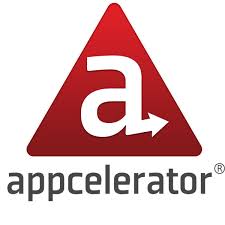 The Appcelerator app development platform facilitates coding in JavaScript, and offer several value-added features such as real-time mobile analytics, and Mobile backend as a service (MbaaS.) It offers a host of high-quality drag-and-drop palette, and achieves 60% to 90% of code reuse when publishing on different platforms.
The Appcelerator app development platform facilitates coding in JavaScript, and offer several value-added features such as real-time mobile analytics, and Mobile backend as a service (MbaaS.) It offers a host of high-quality drag-and-drop palette, and achieves 60% to 90% of code reuse when publishing on different platforms.
5. Mag+
The Mag+ app SDK is highly preferred in the print industry, for catalogs, magazines, and other marketing collateral. The app offers core components for each platform, and allow developers to build atop these components. It is even possible to roll out simple cross-platform apps in double quick time, without any coding.
6. Corona Labs
Corona is popular in the gaming industry, to develop cross-platform 2D graphics games app and educational apps. Corona adopts the powerful and flexible Lua programming language, which is written in C. Corona SDK generates instant results, as soon as the developers write the code. The SDK allows setting up prototypes in double quick time, with minimal code, accelerating time to market.
7. Cocos2D
Cocos2D is a set of frameworks that allow publishing to different mobile platforms, and even desktops from a single code base. Additionally, it offers the flexibility to code in C++, JavaScript, C#, objective C, and a few other languages.
Cocos2D is open source and mostly used to develop cross-platform games and animated content.
8. MobinCube
MobinCube offers a series of templates with drag-and-drop functionality, allowing users to roll out apps on the fly. The simple and easy non-code methodology allow even ordinary, non-technical users to develop apps that work across platforms.
9. Dropsource
Dropsource is a browser based app builder, offering automated solutions for creating Android and iOS apps. The editor offers easy drag and drop interface, connect apps with any RESTful API, and an integrated development environment to customise the source code.
10. BiznessApps
BiznessApps thrives on offering simple solutions to small businesses who want to get basic apps running without hassles. It facilitates developing cross platform apps and mobile websites, through drag-and-drop development and automated submission to the app store, without the need for coding. There are a host of value added features such as seamless integration with third-party systems, rich analytical insights, and more, on offer.
The many cross-platform application development tools on offer are all easily within reach, and the possibilities endless. However, you still have to develop the apps, and make sure to get the UX, the overriding concept and other crucial ingredients right. When you partner with us for your cross-platform mobile application development, you gain from our vast expertise and our highly skilled talent pool, who are seasoned in developing hundreds of cross-platform apps, for all purposes, and for all sectors.
Stay up to date on what's new

Featured Blogs
Stay up to date on
what's new



Talk To Our Experts
The mobile ecosystem is hopelessly fragmented, with a multitude of devices, powered by divergent flavors of multiple operating systems. Developing native platform specific apps in such a state of affairs is akin to battling against desert sand. Cross-platform development would seem as the obvious choice in such a state of affairs. Many developers simply embrace cross-platform development instead. Gartner estimates about 50% of apps are now hybrid.
The obvious benefit of cross-platform mobile application development is reduced costs. Developers spend their time and resources only once, rather than reinvent the wheel for each platform. The savings that emerge when only one instance of the software has to be maintained, on a periodic basis, offers even greater savings. Updates sync automatically to all platforms. Code re-usability and enhanced cloud-based deployments contribute to reduced costs in a big way as well. Such benefits are invaluable in a highly competitive environment where businesses are looking to cut costs and improve process efficiency in a big way.
Cross-platform development infuses consistency to the app, cutting across platforms and devices. A uniform look and feel go a long way in reinforcing the brand image and improving retention rates.
A unified code base enables rapid deployment or faster time to market. This is critical in today’s fast-paced business environment, where apps generally have a short shelf life, and changes in technology make apps obsolete by the day. It especially alleviates the issue of developers cutting corners with testing, for want of time.
HTML5 held promise as the harbinger of a cross-platform world. However, it has lost its luster in the last couple of years as it strived to forge a middle ground and ended up being neither here nor there. One of the biggest stumbling blocks of HTML5 was its inability to trump the distinct UIs of Android and Apple phones. Newer tools such as Appcelerator, PhoneGap, and others resolve such imbroglio by offering several modules and extensions that bridge the gap between platforms, and also offer unique functionality not available elsewhere. Management systems such as parallels.com enable development teams to overcome common development issues, cutting across location.
The following are some of the new tools that give cross platform mobile application development a boost:
- Appcelerator, the mobile app development platform delivers native apps, with real-time mobile analytics
- PhoneGap utilizes the FOSS environment to create HTML and Java based apps, compatible with most OS landscape.
- Xamarin offers C# codebase and code-sharing functionality on multiple platforms
- RhoMobile’s Rhodes, an open source framework, facilitates cross-platform mobile application development based on Ruby.
- Kinvey offers a cloud-based backend service for developers
- Xojo offers maintenance-free web app hosting for businesses
- Dropsource offers automated programming to source code
- Corona Labs’ tool for building 2D educational and gaming apps supports all major platforms
- Yapp allows users to create personalized mobile apps
- Cocos2D enables creating 2D apps from a single code base, cutting across platforms
- GameSalad offers applied game development solutions in an easy drag-and-drop fashion, for cross-platform deployment
- BiznessApps allow small businesses to create and manage apps without any programming knowledge
- MobinCube, a drag and drop, web-based app builder, offer rich templates that cut across platforms
- Qt allows users to code in C++ and export the app to different platforms
These tools make creating apps very easy, and within the realms of even a novice, a big development from a few years ago when mobile app development required extensive coding, possible only though seasoned developers. The ease of development facilitated by these tools further plays into making cross platform mobile application development the preferred option.
A hybrid cross-platform app leverages the power of simplicity. However, the advantages realize only when development is done the right way. For instance, extensive customization may fritter away the gains from having only a code-base. In fact, faulty implementation that fritter away the advantages is the big reason why cross-platform development has not become the established norm yet. An experienced partner helps you gain the full benefits of cross-platform application development, keeping pitfalls at bay. Get in touch with us now to leverage the expertise of our talented team, and the wealth of experience we have accumulated over several cutting edge projects.
Stay up to date on what's new

Featured Blogs
Stay up to date on
what's new



Talk To Our Experts
A major decision to take upfront when developing an iOS application is the choice of programming language. Among the options available, Swift, Apple’s new multi-paradigm, compiled language, is fast gaining traction as the preferred one, posing a serious challenge to the dominance of Objective-C.
Get the Best of Both Worlds
The tremendous popularity of Swift may seem misplaced, considering the language was introduced only in October 2014 and hasn’t had the time to mature fully. However, many developers prefer Swift exactly for such nascence, taking it a challenge to discover new features and review the finer details, before others get there first.
In any case, the brains behind the Swift project have a combined experience of several years in developing earlier languages. Swift benefits from such experience, sparing itself a lengthy trial-and-error and learning curve maturity cycle. Swift gets the best of worlds, packing in excellent features minus the pitfalls or drawbacks associated with earlier languages.
Swift is a step closer to unify writing of build scripts. Swift draws its syntax from incumbents such as C, Objective-C, and Ruby. It uses the run time employed by Objective-C, allowing Swift code to run together with C, Objective-C, and Objective-C++ code, in a single program. In fact, many developers now combine Swift 3 interfaces with Objective-C APIs to pack in maximum power to their apps.
Leverage the Power of Simplicity
Swift harnesses the power of simplicity, offering a simple code, with concise syntax.
Swift reduces the code length significantly, making it not just easier to learn and write the code, but also saving all-important time. For example, Objective-C has two files for the class definition, forcing changes in two places to define a method. Swift, in contrast, has just one file. Writing code in Swift takes just about half the time required to write the code in other languages, on average. Re-writing Lyft, a popular iOS app resulted in the code reducing from 75,000 lines in Objective-C to just 25,000 lines in Swift, without influencing the performance of the app in any way.
The simplicity of the code in no way compromises the power or features. Apple developers claim Swift as “the first industrial-quality systems programming language that is as expressive and enjoyable as a scripting language.”
Swift packs in powerful functionality inside the simple code, making the language very expressive.
- The code syntax helps to auto-correct common developer mistakes, improving safety and stability manifold. The “inferred typing” feature infers the variable type, sparing developers the effort, and also the potential to make mistakes while doing so.
- The automatic garbage collection feature manages memory automatically, disposing of unneeded information sitting in the memory, sparing developers the hassles.
- The concise “closures” feature makes it very easy to develop a small code piece to collect information for the program on a repeated basis.
Swift also adds fun to the development process. For instance, developers can add emojis to the code!
The power-packed Swift code is very fast as well. Swift 2.0 beats C++ in Mandelbrot algorithm and other competition algorithms. It is significantly quicker than the legacy C API saddled Objective-C.
Gain from an Interactive and Collaborative Effort
Swift’s “interactive playground” allow developers a sneak peek at the results of a piece of code. The preview appears as soon as they type it. This feature, apart from making the developer’s life easier, also boosts innovation. For example, developers can exploit some clever tricks using functional elements, such as ‘map’ and ‘filter.’
One big decision that allowed Swift to gain considerable traction is its open source model. Though Swift still has a relatively smaller user community, the community is growing fast, and even big IT companies are now switching from Objective-C to Swift for major projects platforms.
The selection of a suitable language can impact the success of a project in a big way. Swift has lowered entry level barriers to iOS app programming, empowering even average programmers to develop iPhone applications quickly. However, the success of the app still depends on a robust design and architecture, talented developers who are abreast with the latest developments and know how to leverage it, and the ability to exploit the several innovative possibilities that the program offers. Partner with us for your iOS app development process to use the full potential of this innovative new platform.
Stay up to date on what's new

Featured Blogs
Stay up to date on
what's new
















